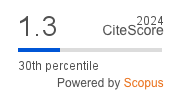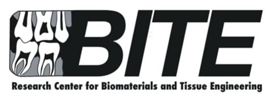Linear and three-dimensional volumetric analysis of maxillary sinus in Saudi Arabian population: A cone-beam computed tomography study
Downloads
Background: The maxillary sinus presents as an important anatomical structure and understanding its radiographic anatomy is crucial for surgical procedures such as dental implant placement and extractions. Measuring the linear and volumetric dimensions of the maxillary sinus is essential for accurate treatment planning and a favorable outcome. Forensic odontology requires population-specific data for victim identification. There is therefore some need to develop a multicentric, multiethnic data registry. Purpose: The present study evaluates and compares the dimensions of maxillary sinuses and their relationship with individual height in the Saudi Arabian population, using cone-beam computed tomography (CBCT). Methods: The study subjected CBCT scans of 30 individuals to linear and volumetric analysis. The measurements were taken by two observers and mean dimensions were used for the analysis. Linear and volumetric dimensions were measured for the total sample and male (n=11) and female (n=19) categories. Results: Differences between linear and volumetric dimensions were statistically nonsignificant for males, females, and the overall sample. Correlations between left- and right-sinus dimensions were significant within females and the overall group. There was weak association between individual height and maxillary sinus dimensions. Conclusion: There is no significant variation between right and left maxillary sinus dimensions among the Saudi Arabian population. A negative correlation was observed between overall height and left maxillary sinus volume in both genders, and with right sinus volume in females only.
Downloads
Aktuna Belgin C, Colak M, Adiguzel O, Akkus Z, Orhan K. Three-dimensional evaluation of maxillary sinus volume in different age and sex groups using CBCT. Eur Arch Oto-Rhino-Laryngology. 2019; 276(5): 1493–9. doi: https://doi.org/10.1007/s00405-019-05383-y
Tavelli L, Borgonovo AE, Re D, Maiorana C. Sinus presurgical evaluation: a literature review and a new classification proposal. Minerva Dent Oral Sci. 2017; 66(3): 115–31. doi: https://doi.org/10.23736/S0026-4970.17.04027-4
Yeung AWK, Hung KF, Li DTS, Leung YY. The use of CBCT in evaluating the health and pathology of the maxillary sinus. Diagnostics. 2022; 12(11): 2819. doi: https://doi.org/10.3390/diagnostics12112819
Butaric LN. Differential scaling patterns in maxillary sinus volume and nasal cavity breadth among modern humans. Anat Rec. 2015; 298(10): 1710–21. doi: https://doi.org/10.1002/ar.23182
Attalla SM, Ads HO, Oo T, Abdalqader MA, Ramanathan PA, Zaman KNBK. Gender and race determination of the maxillary sinus among Malaysian population by computed tomography. Int J Med Toxicol Leg Med. 2020; 23(1and2): 5–9. doi: https://doi.org/10.5958/0974-4614.2020.00002.9
Aulianisa R, Widyaningrum R, Suryani IR, Shantiningsih RR, Mudjosemedi M. Comparison of maxillary sinus on radiograph among males and females. Dent J. 2021; 54(4): 200–4. doi: https://doi.org/10.20473/j.djmkg.v54.i4.p200-204
Koppe T, Nakatsukasa M, Yamanaka A. Implication of craniofacial morphology for the pneumatization pattern of the human alveolar process*. Acta Medica Litu. 2005; 12(1): 40–6. web: https://www.researchgate.net/publication/228503694
Altwaijri A, Kolarkdoi SH, Alotaibi KZ, Alotaiby F, Almutairi FJ. Retrospective CBCT analysis of maxillary sinus pathology prevalence in the Saudi Arabian population. Saudi Dent J. 2024; 36(6): 868–72. doi: https://doi.org/10.1016/j.sdentj.2024.03.016
Le CT. Introductory biostatistics. New Jersey: John Wiley & Sons; 2003. p. 492. web: https://cbpbu.ac.in/userfiles/file/2020/STUDY_MAT/ZOO/PK%20(2).pdf
Sharma SK, Jehan M, Kumar A. Measurements of maxillary sinus volume and dimensions by computed tomography scan for gender determination. J Anat Soc India. 2014; 63(1): 36–42. doi: https://doi.org/10.1016/j.jasi.2014.04.007
Scarano A, Cappucci C, Rapone B, Bugea C, Lorusso F, Serra P, Di Carmine MS. Volumetric evaluations of the maxillary sinus before and post regenerative surgery. Eur Rev Med Pharmacol Sci. 2023; 27(3 Suppl): 128–34. doi: https://doi.org/10.26355/eurrev_202304_31331
Morgan N, Meeus J, Shujaat S, Cortellini S, Bornstein MM, Jacobs R. CBCT for diagnostics, treatment planning and monitoring of sinus floor elevation procedures. Diagnostics. 2023; 13(10): 1684. doi: https://doi.org/10.3390/diagnostics13101684
Velasco-Torres M, Padial-Molina M, Avila-Ortiz G, García-Delgado R, O’Valle F, Catena A, Galindo-Moreno P. Maxillary sinus dimensions decrease as age and tooth loss increase. Implant Dent. 2017; 26(2): 288–95. doi: https://doi.org/10.1097/ID.0000000000000551
Cohen O, Warman M, Fried M, Shoffel-Havakuk H, Adi M, Halperin D, Lahav Y. Volumetric analysis of the maxillary, sphenoid and frontal sinuses: A comparative computerized tomography based study. Auris Nasus Larynx. 2018; 45(1): 96–102. doi: https://doi.org/10.1016/j.anl.2017.03.003
Gulec M, Tassoker M, Magat G, Lale B, Ozcan S, Orhan K. Three-dimensional volumetric analysis of the maxillary sinus: a cone-beam computed tomography study. Folia Morphol (Warsz). 2020; 79(3): 557–62. doi: https://doi.org/10.5603/FM.a2019.0106
Hettiarachchi PVKS, Gunathilake PMPC, Jayasinghe RM, Fonseka MC, Bandara RMWR, Nanayakkara CD, Jayasinghe RD. Linear and volumetric analysis of maxillary sinus pneumatization in a Sri Lankan population using cone beam computer tomography. Zhang XL, editor. Biomed Res Int. 2021; 2021(1): 6659085. doi: https://doi.org/10.1155/2021/6659085
Kamburoğlu K, Yılmaz F, Gulsahi K, Gulen O, Gulsahi A. Change in periapical lesion and adjacent mucosal thickening dimensions one year after endodontic treatment: Volumetric cone-beam computed tomography assessment. J Endod. 2017; 43(2): 218–24. doi: https://doi.org/10.1016/j.joen.2016.10.023
Shaul Hameed K, Abd Elaleem E, Alasmari D. Radiographic evaluation of the anatomical relationship of maxillary sinus floor with maxillary posterior teeth apices in the population of Al-Qassim, Saudi Arabia, using cone beam computed tomography. Saudi Dent J. 2021; 33(7): 769–74. doi: https://doi.org/10.1016/j.sdentj.2020.03.008
Alassaf MS, Alolayan A, Almuzaini E, Masoudi AA, Alturki K, Alsaeedi AK, Sedqi BM, Elsayed SA. Prevalence and characteristics of the maxillary sinus septa in a Saudi Arabian sub-population: A retrospective cone beam computed tomography (CBCT)-based study. Cureus. 2023; 15(10): e47605. doi: https://doi.org/10.7759/cureus.47605
Toprak ME, Ataç MS. Maxillary sinus septa and anatomical correlation with the dentition type of sinus region: a cone beam computed tomographic study. Br J Oral Maxillofac Surg. 2021; 59(4): 419–24. doi: https://doi.org/10.1016/j.bjoms.2020.08.038
Christoloukas N, Mitsea A, Rontogianni A, Angelopoulos C. Gender determination based on cbct maxillary sinus analysis: A systematic review. Diagnostics. 2023; 13(23): 3536. doi: https://doi.org/10.3390/diagnostics13233536
Novita M. Facial, upper facial, and orbital index in Batak, Klaten, and Flores students of Jember University. Dent J (Majalah Kedokt Gigi). 2006; 39(3): 116. doi: https://doi.org/10.20473/j.djmkg.v39.i3.p116-119
Abate A, Cavagnetto D, Lanteri V, Maspero C. Three-dimensional evaluation of the maxillary sinus in patients with different skeletal classes and cranio-maxillary relationships assessed with cone beam computed tomography. Sci Rep. 2023; 13(1): 2098. doi: https://doi.org/10.1038/s41598-023-29391-5
Agacayak KS, Gulsun B, Koparal M, Atalay Y, Aksoy O, Adiguzel O. Alterations in maxillary sinus volume among oral and nasal breathers. Med Sci Monit. 2015; 21: 18–26. doi: https://doi.org/10.12659/MSM.891371
Tikku T, Khanna R, Sachan K, Srivastava K, Munjal N. Dimensional changes in maxillary sinus of mouth breathers. J Oral Biol Craniofacial Res. 2013; 3(1): 9–14. doi: https://doi.org/10.1016/j.jobcr.2012.11.005
Copyright (c) 2025 Dental Journal

This work is licensed under a Creative Commons Attribution-ShareAlike 4.0 International License.
- Every manuscript submitted to must observe the policy and terms set by the Dental Journal (Majalah Kedokteran Gigi).
- Publication rights to manuscript content published by the Dental Journal (Majalah Kedokteran Gigi) is owned by the journal with the consent and approval of the author(s) concerned.
- Full texts of electronically published manuscripts can be accessed free of charge and used according to the license shown below.
- The Dental Journal (Majalah Kedokteran Gigi) is licensed under a Creative Commons Attribution-ShareAlike 4.0 International License

















